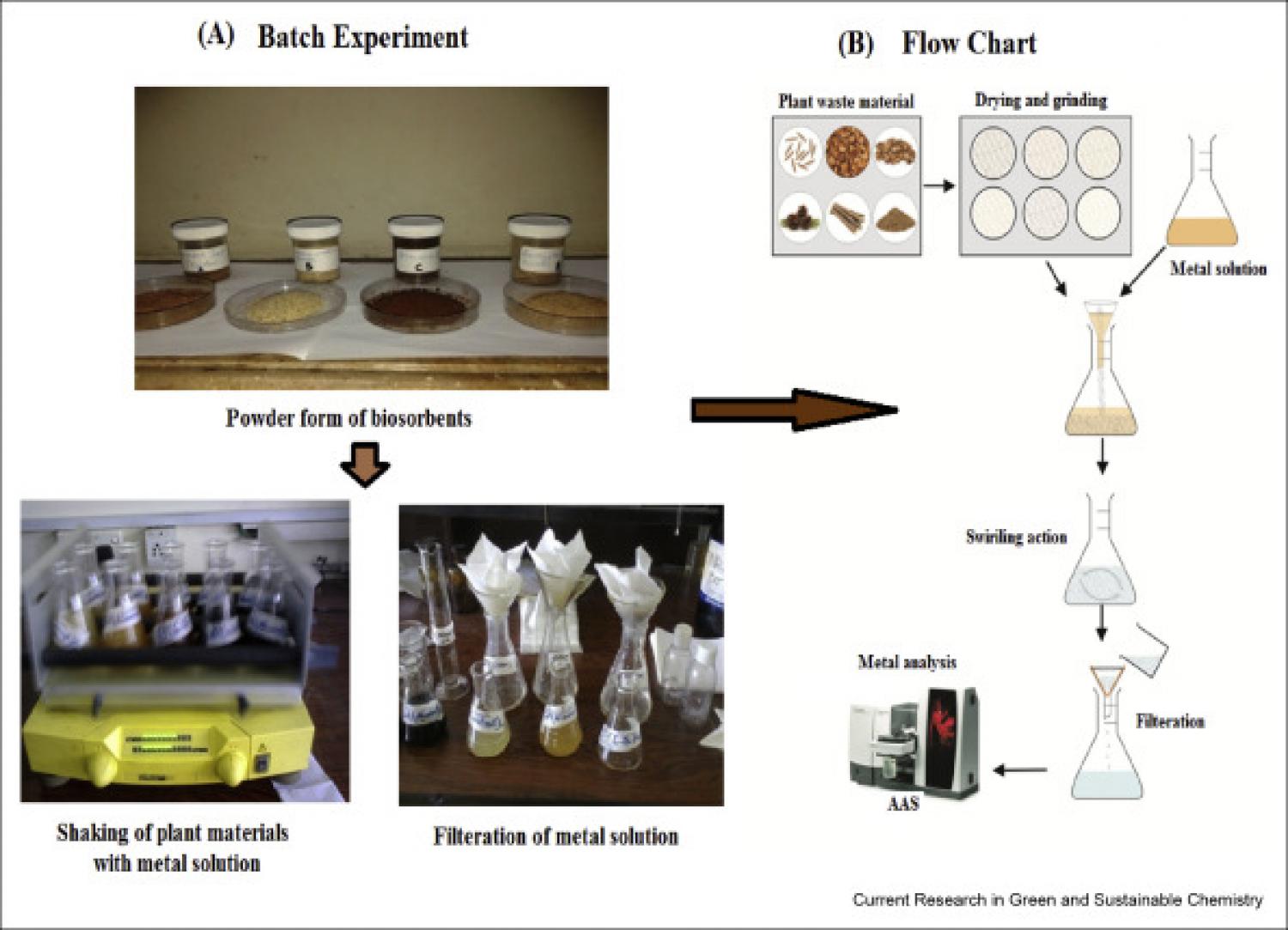
The waste plant materials, including neem wood, eucalyptus, pine cone wood, almond shell, walnut shell and sawdust, were used as biosorbents to remove heavy metals from the water. The % removal efficiency of each biosorbent for copper (Cu), zinc (Zn), manganese (Mn), lead (Pb), chromium (Cr) and arsenic (As) was estimated at various pH and for different contact hours by using atomic absorption spectrometer. All biosorbents have shown poor efficiencies for arsenic removal, while their % removal efficiencies towards other metals were found appropriate at near drinking water pH (7.5) and at a contact time of 3 h. Among all biosorbents, pine cone, eucalyptus and neem wood have shown comparatively more significant removal of Cu, Zn, Mn, Pb and Cr. The overall % removal efficiencies were found greater with pine cone wood and the value reached to 99% for Cu removal. For arsenic removal, the sawdust was modified by chemical treatment and significant removal up to 80% was found.
